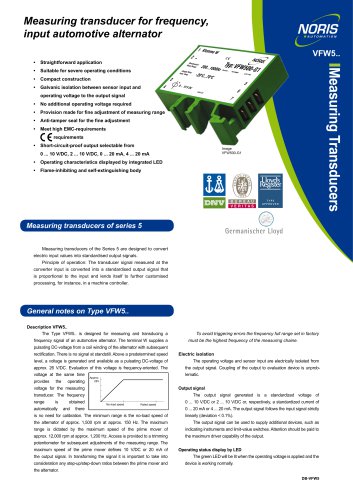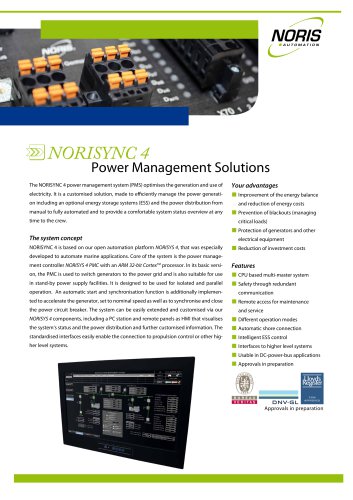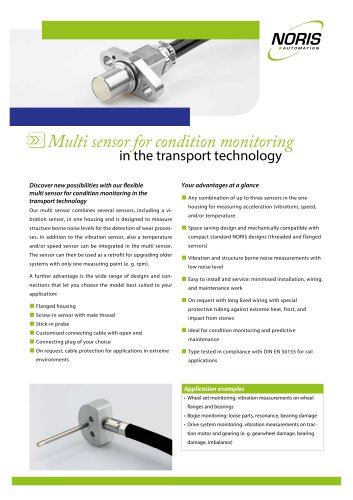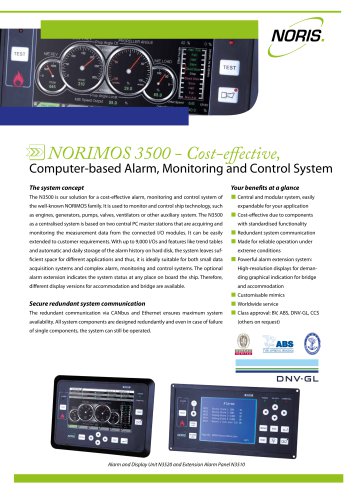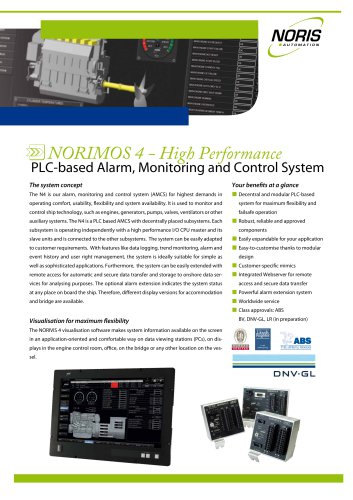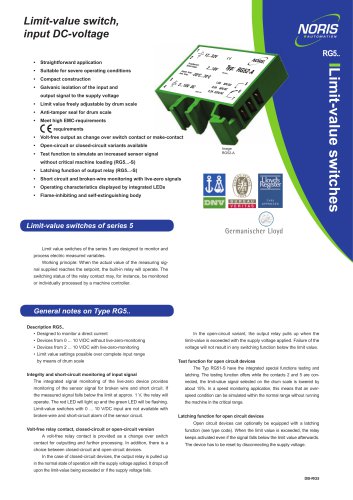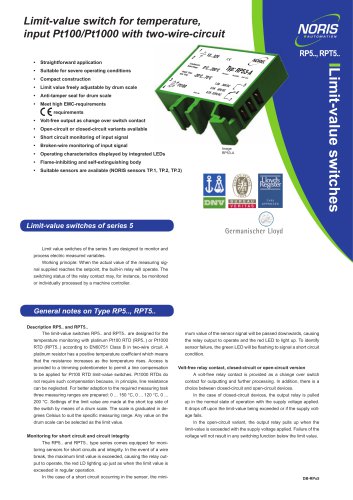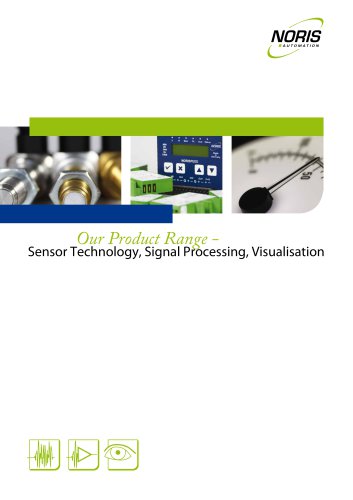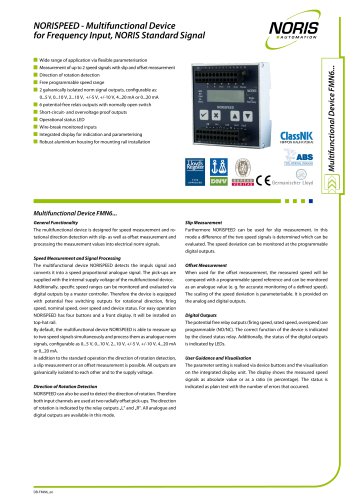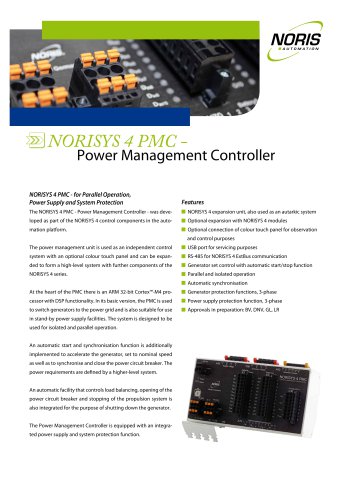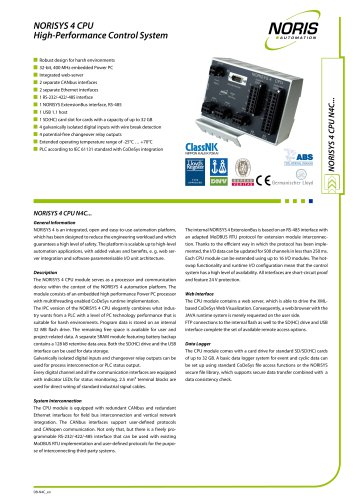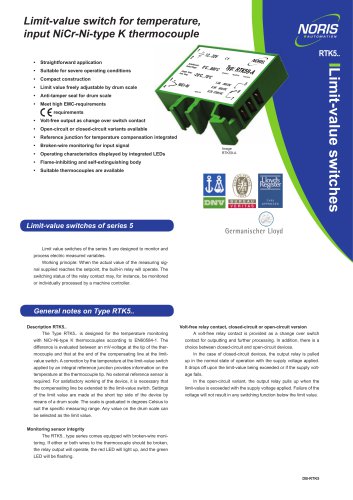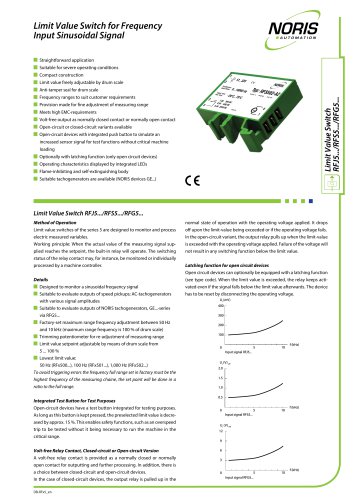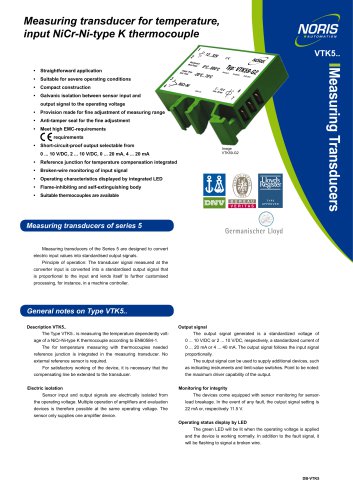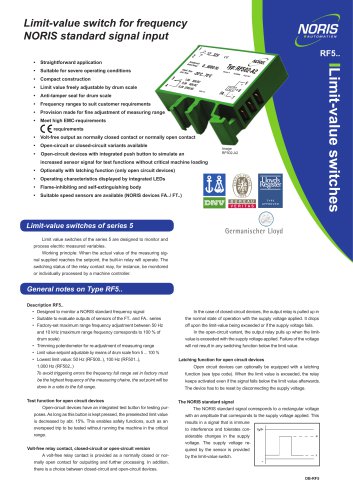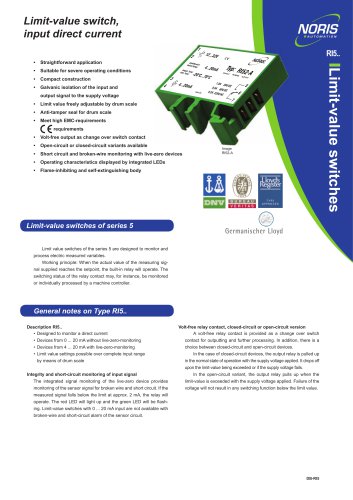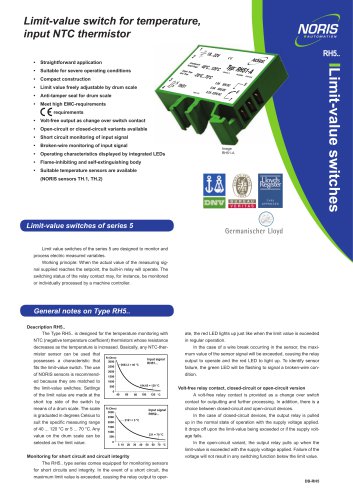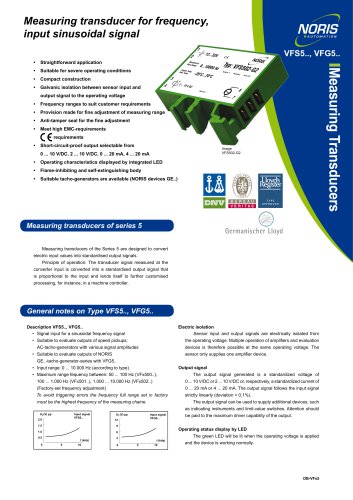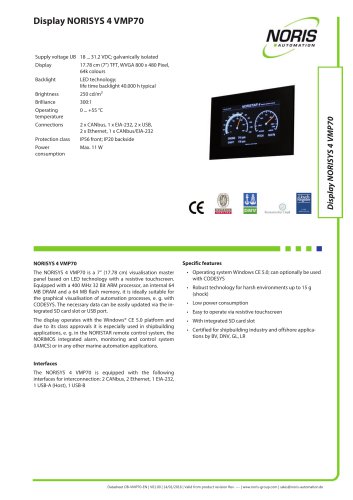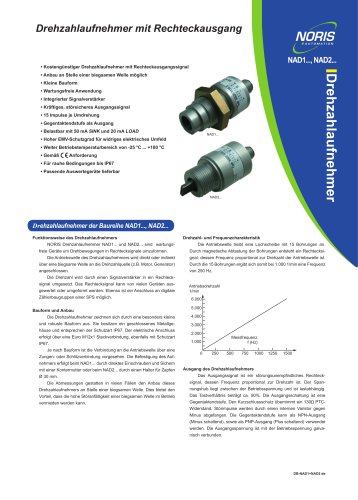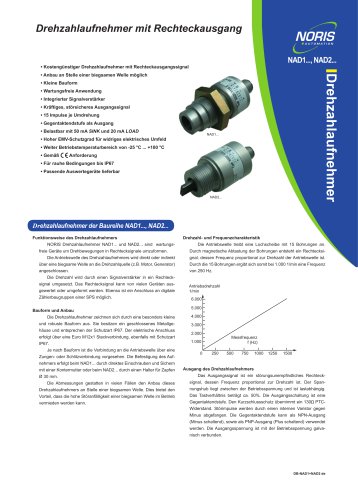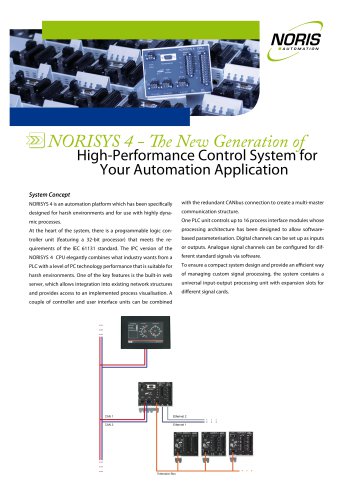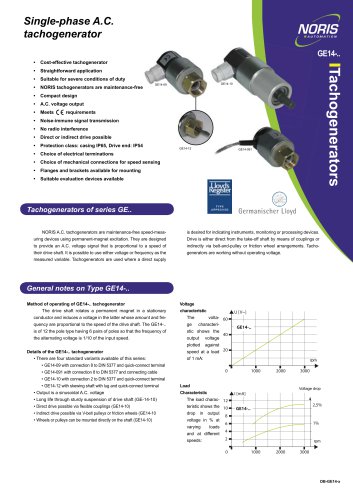 Website:
NORIS Group GmbH
Website:
NORIS Group GmbH
Group: Noris Group
Catalog excerpts

Measuring transducer for frequency, input automotive alternator 2 • Straightforward application • Compact construction • Galvanic isolation between sensor input and operating voltage to the output signal Measuring Transducers • Suitable for severe operating conditions • No additional operating voltage required • Provision made for fine adjustment of measuring range • Anti-tamper seal for the fine adjustment • Meet high EMC-requirements • Short-circuit-proof output selectable from • Operating characteristics displayed by integrated LED • Flame-inhibiting and self-extinguishing body Measuring transducers of series 5 Measuring transducers of the Series 5 are designed to convert electric input values into standardised output signals. Principle of operation: The transducer signal measured at the converter input is converted into a standardised output signal that is proportional to the input and lends itself to further customised processing, for instance, in a machine controller. General notes on Type VFW5.. Description VFW5.. The Type VFW5.. is designed for measuring and transducing a frequency signal of an automotive alternator. The terminal W supplies a To avoid triggering errors the frequency full range set in factory must be the highest frequency of the measuring chaine. pulsating DC-voltage from a coil winding of the alternator with subsequent rectification. There is no signal at standstill. Above a predetermined speed Electric isolation level, a voltage is generated and available as a pulsating DC-voltage of The operating voltage and sensor input are electrically isolated from approx. 26 V/DC. Evaluation of this voltage is frequency-oriented. The the output signal. Coupling of the output to evaluation device is unprob- voltage at the same time Output signal voltage for the measuring transducer. The frequency range The output signal generated is a standardized voltage of No-load speed Rated speed is no need for calibration. The minimum range is the no-load speed of 0 ... 10 V/DC or 2 ... 10 V/DC or, respectively, a standardized current of 0 ... 20 mA or 4 ... 20 mA. The output signal follows the input signal strictly linearly (deviation < 0.1%). the alternator of approx. 1,500 rpm at approx. 150 Hz. The maximum The output signal can be used to supply additional devices, such as range is dictated by the maximum speed of the prime mover of indicating instruments and limit-value switches. Attention should be paid to approx. 12,000 rpm at approx. 1,200 Hz. Access is provided to a trimming the maximum driver capability of the output. potentiometer for subsequent adjustments of the measuring range. The maximum speed of the prime mover defines 10 V/DC or 20 mA of the output signal. In transforming the signal it is important to take into consideration any step-up/step-down ratios between the prime mover and Operating status display by LED The green LED will be lit when the operating voltage is applied and the device is working normally.
Open the catalog to page 1
Technical Data Series VFW5.. Operating voltage UO supply from terminal W Reverse voltage protection Integrated 2.5 times UR up to 2 ms Voltage drops Power consumption Galvanic isolation Between input signal and operating voltage to the output signal Input signal Terminal W of a 24 V automotive alternator Input overloading 0 ... 10 V/DC (VFW5..-G1), 2 ... 10 V/DC (VFW5..-G2), short-circuit-proof, load current 20 mA max. Noise voltage Error class Temperature sensitivity Voltage sensitivity < +/- 0.1% for 10% change in operating voltage Reaction time Vibration resistance Shock resistance...
Open the catalog to page 2All NORIS Group GmbH catalogs and brochures
-
Unique Yacht Automation
16 Pages
-
Energy storage solutions
2 Pages
-
Datasheet TAV131
3 Pages
-
Datenblatt VFS5
2 Pages
-
Datasheet PAx9
6 Pages
-
Datasheet RG5
2 Pages
-
Datasheet RP5, RPT5
2 Pages
-
Datasheet NIR3 NIQ3
20 Pages
-
Datasheet VD61
6 Pages
-
Datasheet FA13
14 Pages
-
Datasheet NIQ31
16 Pages
-
Energy Storage System
2 Pages
-
NORIS Marine Overview
13 Pages
-
Datasheet NORISYS 4 LA4
4 Pages
-
Datasheet NORISYS 4 LS4
4 Pages
-
Datasheet NORISYS 4 LT4
4 Pages
-
Datasheet FA54
11 Pages
-
RETROFIT - modernise your
2 Pages
-
NORIS Brochure
15 Pages
-
Datasheet TP31 TH31
5 Pages
-
Datasheet EOT
6 Pages
-
Datasheet NORISPEED FMN6
2 Pages
-
Datasheet DWA
4 Pages
-
Datasheet TP23
4 Pages
-
Datasheet VF5
2 Pages
-
Flyer NORISYS 4 CPU
2 Pages
-
Datasheet RFW5
2 Pages
-
NORISYS 4 - PLC Deep Sea
2 Pages
-
Datasheet RTK5
2 Pages
-
Datasheet RFJ5
2 Pages
-
Datasheet VTK5
2 Pages
-
Datasheet RF5
2 Pages
-
Datasheet RI5
2 Pages
-
Datasheet RFG5
2 Pages
-
Datasheet VPT5
2 Pages
-
Datasheet RH5
2 Pages
-
Datasheet VFS5
2 Pages
-
Datasheet RH41M
2 Pages
-
Datasheet RW5
2 Pages
-
Datasheet VMP70
3 Pages
-
Datasheet VP5
2 Pages
-
Datasheet NADS3
2 Pages
-
Datasheet NAD2
2 Pages
-
Datasheet NAD1
2 Pages
-
Flyer NORISYS 4
2 Pages
Archived catalogs
-
Datasheet GE12
2 Pages
-
Datasheet GE14
2 Pages

